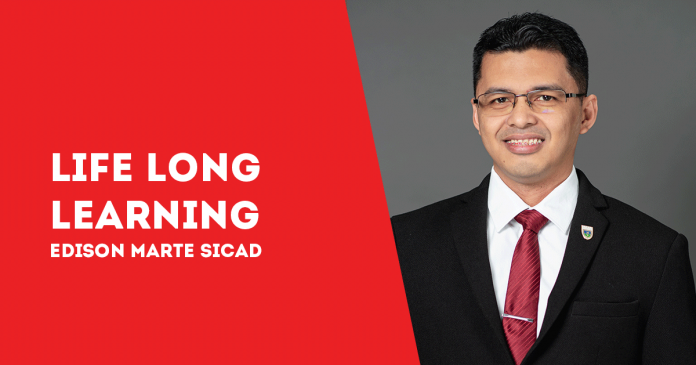
BY EDISON MARTE SICAD
IN THE PREVIOUS article, we have pointed out that in the proposition about charter change, the First Speaker of the Affirmative side put forward the following:
1. The Affirmative side proposed to amend the amendatory provision of the 1987 Philippine Constitution, specifically Section 1, subsection 1 of Article XVII, to wit:
AMENDMENTS OR REVISIONS
Section 1. Any amendment to, or revision of, this Constitution may be proposed by:
(1) The Congress, upon a vote of three-fourths of all its Members;
2. The First speaker explained that subsection 1 must clearly state as to when both Houses (the Senate and the House of Representatives) of Congress shall vote as one body and in what issues shall each House vote separately.
3. Further, (and this is where two of the judges had a hard time grasping the rationale of the team) the speakers of the Affirmative side proposed that such clarification will be done through Section 2 of the Amendatory provision, the people’s initiative, to wit:
Section 2. Amendments to this Constitution may likewise be directly proposed by the people through initiative upon a petition of at least twelve per centum of the total number of registered voters, of which every legislative district must be represented by at least three per centum of the registered voters therein. No amendment under this section shall be authorized within five years following the ratification of this Constitution nor oftener than once every five years thereafter.
The Congress shall provide for the implementation of the exercise of this right. (This argument, people’s initiative, requires another column.)
In the previous article, we have discussed Section 1, subsection (1). Take note:
1. The Constitution, as the fundamental law of the land, is NOT worded like an Implementing Rules and Regulations document. Somehow, its provisions must be vague so that the people and their representatives will be able to adapt to the changing needs of the society.
2. Moreover, clarification does NOT immediately mean amendment. For the issue may not be about amending a provision, but more of the Supreme Court interpreting it. It can also be a political question: the members of the Congress themselves can decide if they will vote as one body or separately depending on the gravity of the issues.
3. Finally, former Chief Justice Hilario Davide, Jr., one of the framers of the 1987 Constitution, said this when he was interviewed by Karen Davila about such vagueness:
Davila: “Why didn’t you write clearly then? If it was written clearly, no one would be arguing like this.”
Davide: “Well, it is very clear. By the very nature of the Bicameral Assembly, even if it is not clearly stated there. What must be clearly stated there is if it is joint voting like the provisions as to the declaration of Martial Law and the suspension of the privilege of the writ of habeas corpus where the Constitution itself mandated a joint session but voting jointly also. The presumption then is that in all other instances, if the Constitution did not provide for a joint, it would be separate.”
But these were not mentioned by the Negative side. (Not that these arguments can make them win immediately.) How then, did the Negative side respond to the proposal of the Affirmative side?
The Negative side, which was clearly caught off-guard by the definition of terms of the Affirmative side during the match, gave a “total negation” response. In other words, the Negative side argued that amending the Constitution will not create any improvement to the society. Amendment is not the solution to the many problems of the status quo: corruption, poverty, among others. There is no urgent need to amend the Constitution, which, by implication, include Article XVII Section 1(1) and Section 2.
Remember this:
1. Academic debate must train students not only for intellectual pursuits but for character formation as well.
2. Do not define a term (trick definition) so as to gain an undue advantage against the opposing team.
3. Win based on your strength and not on the weakness of the opponent.
4. As to the argument that the Negative side did not specifically mention subsection 1 and section 2 arguments of the Affirmative side, such opinion is valid. However, as one of the adjudicators, I cannot close my eyes, so to speak, to the trick put forward by the Affirmative side. You cannot just get away with it.
Again, these observations are not meant to put down anyone. My motive is to impart my insights for what has transpired in one of the matches. And we must learn not only from our achievements but also from our failures. There is always room for improvement.
But the Affirmative Team may argue that its debaters performed convincingly during the interpellation part.
What is the main objective of Interpellation? How can a debater use a series of questions as a weapon to destroy the arguments of the opposing side? (To be continued)/PN



